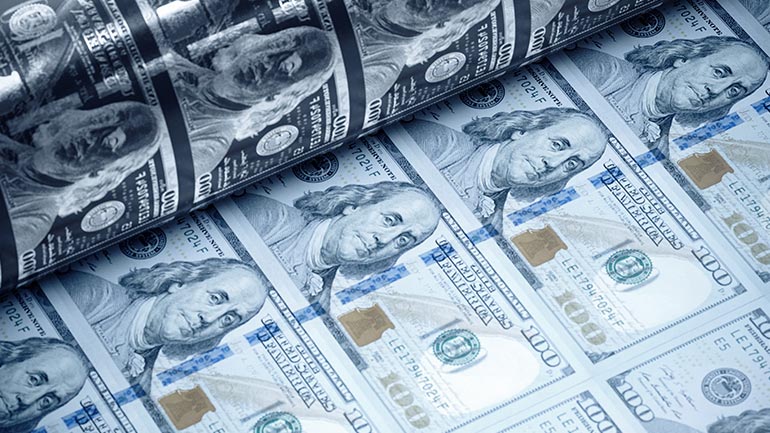The USD's Second-Half Playbook
By: Mark McCormick
June 30, 2022 - 5 Minutes
The past few months have been a wild ride across the FX market. The drivers have shifted between a broad array of macro forces and a The past few months have been a wild ride across the FX market. The drivers have shifted between a broad array of macro forces and a single, unified theme of a strengthening USD. Shifting between these dynamics has altered correlations, creating a fair amount of uncertainty about what happens next.
Overall, the broad USD rallied this year by around 5%. However, that masks the divergence under the hood, where Latin America (Latam) has rallied around 4%, while Scandinavia (Scandis) has declined by about 10%. As a result, the broad picture presents a disassociated outlook, underlying the divergence across themes and countries.
We discuss key performance drivers alongside our broader outlook and views. Overall, we look for a potentially more resilient USD in the short-term followed by rising downside risks as we move through this year and into 2023.
The FX Market's Four Horseman: Risk, Rates, Growth, and China
We focused on four key drivers that captured the narrative around the FX market. These forces include risk sentiment, rates, global growth, and China. What's critical for the short- and medium-term is how much risk premium the USD has priced into these factors and how these forces will shape the USD in the months ahead.
The World's Risk Hedge
We start with risk sentiment. The most recent shift across market correlations has been the move to a single driver at the expense of a few. Tighter financial conditions have trumped all other factors (at least through April and the past few weeks) supporting the USD.
What's vital is that the USD acts as a global portfolio hedge. With the USD's broad balance of payments deteriorating, global investors are cutting exposure to risk assets. Yet instead of repatriating that capital home, they are leaving it in USD-based cash accounts. The USD is king, but that's mostly a reflection of a dash to cash rather than another round of U.S. exceptionalism.
USD's Rich to Rates as Central Banks Converge
The most commonly tracked factor falls to the rate differentials. Arguably, the best setup for the USD is when the 2s10s yield curve flattens, anticipating a shift in Fed policy. It's an extra kicker if U.S. growth and assets outperform the rest of the world (ROW). The USD has recently rallied in sympathy with the shift in front-end spreads, though it has come with a bit of a lag.
Our analysis suggests that the USD looks expensive relative to ROW rate dynamics, including against the 2y US-ROW swap rates, and against G10 1y1d forward swaps. As a result, if market pricing is accurate on the U.S. terminal rate and doesn't need to move higher on a relative basis, then investors might start to feel comfortable pricing out this USD premium.
Global Growth Has Cooled, But Risk Premiums Abound
The USD's association with risk sentiment reflects the links to global growth dynamics. The recent slowdown in the global economy has boosted the USD, just as it had sapped risk appetite. It's the classic USD smile effect but also a dynamic that has sharply boosted the USD risk premium across a few key factors. The presence of a USD risk premium underscores that macro fundamentals haven't validated the move.
Our analysis of consensus growth expectations for the year ahead finds that while we've seen downgrades for all G10 countries since the start of the year, the U.S. has slowed faster than most over the past eight weeks, reflecting the Fed's impact on growth. The implication is that the Fed's overly aggressive stance could backfire on the USD over time, especially if the USD loses both its growth and equity edge. Further analysis finds that the USD currently trades at a greater than 2% premium to global CPI and growth diffusion indices - lower than the level posted in late-April, but still around 1-sigma on the full-time series.
The China Puzzle - A USD Headwind or Tailwind?
The Chinese and European asset and growth outlook will be key for the USD in the months ahead. While market expectations handicap around a 30% chance of a U.S. recession, it's clear the Fed has engineered an equity market recession. When real rates are rising, fundamentals seem to matter more.
Meanwhile, China provides a unique and entirely different setup relative to the U.S. (and other G10 countries). For one thing, while in China both growth and inflation are cooling, in the U.S. growth is cool but inflation remains high. As a result, the policy mix in China focuses on easing monetary conditions rather than tightening them. By extension, you get lower rates, a weaker currency, and a setup that could invite equity flows. Though China's zero-COVID policy is the rub and the biggest risk factor, given its impact on growth.
Modelling the USD against China's market risk factor (related to CNY, HY credit, MSCI China, iron ore, and 10 CGB) indicates that the USD is more than 5% overvalued. This means that lots of bad China news is already priced into the USD. We also find that China's data surprises are positive (and accelerating) while U.S. ones are negative (and decelerating). This setup may not relieve the pressure on CNY, given that the easing of financial conditions could still weigh on the currency.
Putting It All Together
In the end, we anticipate a resilient USD in the very short term but also think these USD bounces will offer opportunities to fade over the following months and quarters, as we see building downside risks for the USD.
Looking at the dispersion of Bloomberg consensus FX forecasts, we're seeing higher levels of disagreement than normal for most major currency pairs, highlighting the higher-than-normal level of uncertainty. One by-product is that pairs with less agreement might offer better trading opportunities, reflecting the wide range of views, and we note that USD-Scandis and USDJPY fall into this category.
Looking at valuation from another angle, we find that when comparing currency pairs to our Global Macro PCA fair value tool, nearly 80% of the G10 currencies are now cheap versus the USD versus only 37% in the EM space. As a result, we could see a bit more action in the G10 space in the next few months, primarily if markets work on pricing out (rather than boosting) the noted USD risk premiums.

Director and Global Head of FX Strategy

Director and Global Head of FX Strategy

Director and Global Head of FX Strategy

